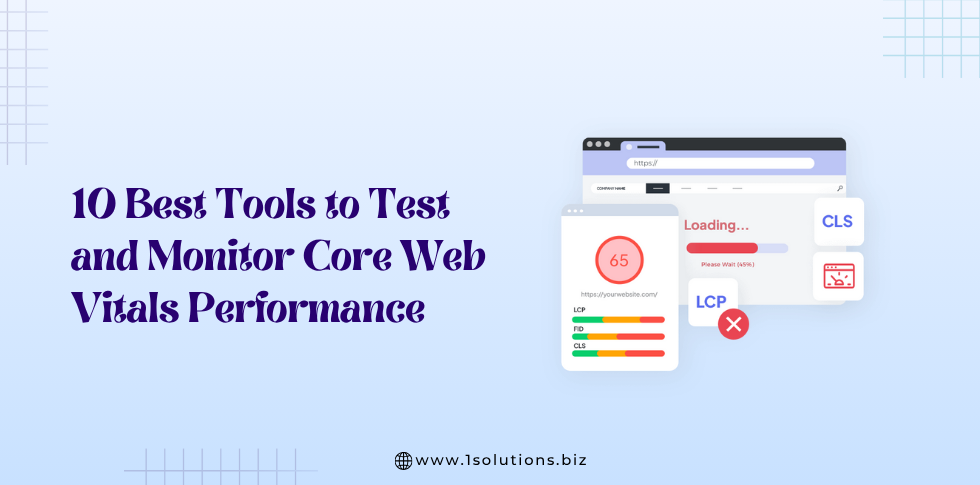The domain is the identification string that always defines the administrative authority or control within the internet. On the other hand, domain reputation essentially allows you to maintain your reputation without worrying about individual IP addresses. This means you can change the IPs send emails from different domain providers and add your new IP address without sharing it or losing the domain reputations of the brand.
In this article, we are going to let you know about how to improve domain reputation for better email deliverability. The measurement and the understanding of how successful a sender is at getting their marketing email into people’s inboxes. Also, it is essential to email marketing and help to increase your growth.

Why Should You Monitor Your Domain Reputation? By keeping an eye on your IP and domain reputation, it will be easier to reach a customer’s mail server. If your business depends on digital marketing, sales, or outreach, then it is imperative for you to pay special attention to your domain reputation. As it is, domain reputation is always the first domino to fall before your entire digital presence crumbles. And once your domain reputation is low, it will require a lot of effort and expertise to rebuild all that reputation again.
A basic introduction to domain

If we define domain then, it is a network of computers and devices that are controlled by one set of authorities and that have specific guidelines to be followed. A domain can be authorized by a particular company or organization that has an internet presence and IP address. How can the domain be identified? So the domain is labeled by its domain names such as 1Solutions or 1solutions.biz.
Domain name system (DNS) servers translate a domain name request from an internet user into an IP address that the computer can read. The DNS server then connects the user to the website for the IP address found within the domain server records. The highest-ranking domains in the internet domain are known as top-level domains (TLDs). In this TLD, the extensions of their domain name such as .com, .org, or .net.
Basic Email deliverability

It is the ability to deliver emails to subscriber’s inboxes. It is what some marketers use to gauge the likelihood of their email campaigns reaching their subscribers’ inboxes related to actual delivery like ISPs, throttling, bounces, spam issues, and bulking.
Elements that hurt deliverability include sending without custom authentication, using single opt-in, sending from a free domain email address, making it difficult to unsubscribe, using URL shorteners, and lack of engagement.
Email deliverability is a metric that indicates the number of emails that reached the recipients’ inboxes. Many factors influence it, but the best option to be on the safe side is to use a well-respected service that takes care of all the technical issues.
Fact about Domain reputation

Domain reputation refers to the health or condition of your branded domain. Who determines your domain reputation? ISPs & Mailbox providers. Among the prominent ISPs, Gmail has Google Postmaster which tracks the domain & IP reputation, while Hotmail has SNDS which tracks the IP reputation.
What Does It Mean to Check My Domain Reputation?
Checking domain reputation means figuring out how well you land up in a receiver’s inbox. If your email content is high-grade and relevant, your domain reputation score will be higher. High-quality emails or relevant content are emails that receivers often engage with.
How to Check Domain Reputation?

As we all know, there are many free resources online where you can check your domain reputation. Domain reputation is only tracked by Google. One of the most notable domain reputation tools is Google Postmaster Tools. It is a top receiver for many senders. This domain reputation tool provides you with a reputation grade from Google. That grade gives you insight into your delivery information to recipients who utilize Gmail.
On Which Factors the Domain Reputation Depends
The six key factors that affect the domain reputation are:
1. Blacklisting

Blacklists are created by mailbox providers to prevent spamming. Mailbox providers use blacklists to filter out emails from spammers. Blacklisting occurs when email recipients mark emails as spam or junk. If a particular email that is sent out to a large database has a high spam complaint, it could result in the domain being blacklisted. Blacklisting adversely affects a domain’s reputation and can decrease your domain’s reputation considerably.
2. Spam traps

Spam traps are fake email addresses found on hidden locations across the web operated by Blacklisting services. You should be wary of sending emails to spam traps because this could hinder your email deliverability considerably. Spam traps are difficult to identify as compared to bounce rates and spam complaints and they don’t respond to emails or sign up for mailing lists.
3. Poor emailing practices

Your sending time and content quality in the email matter. Moreover, the kind of emails you send out, whether they are sent straight to junk or spam, overall affects email deliverability.
4. Poor email engagement

One of the main reasons for the deterioration in a domain’s reputation is also poor email engagement. High rates of unsubscribing and poor open email rates due to poor email quality, can lead to poor email engagement and in turn, a bad domain reputation.
5. Volume consistency

Legitimate marketers grow their subscriber base as the business grows. With time, more emails are shared on a frequent basis. The domain reputation largely depends thus on the consistency and volume of emails sent.
6. Domain Age

The length of your domain’s existence is its age. Anti-spam filters check the domain age. So it’s important that you warm your domain up, i.e. use it at least for three months by sending out cold emails to your database to establish a good sender reputation.
How to Improve Your Domain Reputation

You can improve your domain reputation with a bit of time and effort. In addition to the habits discussed in the previous section, you may want to consider the following practices:
- Pause Your Cold Email Campaign:
Sending cold emails can have many benefits for gaining new leads. However, if your reputation isn’t in good standing, ISPs will be hesitant to allow your messages through to recipients who didn’t subscribe to your content. Once your reputation is back in good standing and your inbox is warm, you can strategize a cold email marketing campaign - Request Removal From Any Blocklists Your Domain Is On:
This is absolutely necessary for your reputation. If your reputation suddenly plummets, your first step should be to check blocklists. If you are on a blocklist, contact the list administrator to request removal. - Make It Easy for Your Recipients to Unsubscribe:
This may seem counterintuitive, but if your recipients don’t have the ability to unsubscribe, they may simply mark your content as spam. Unsubscribe requests are less damaging than spam complaints, so providing an unsubscribe link is better in the long run. - Clean Your Email List:
If your reputation is struggling, you should evaluate your email list meticulously. You can use an online tool to verify that the emails on your list are still active. Additionally, it’s essential that you never buy email lists because they are often packed with fake emails and spam traps. - Switch to a Dedicated IP:
Using a dedicated IP instead of a shared IP gives you more control over your domain’s reputation. While a dedicated IP is more of an investment, it can significantly improve your reputation because you won’t be at the mercy of other users on the shared IP.
Domain Reputation Related to Email Deliverability
As a positive domain reputation makes it more likely that your messages will make it to your intended recipients, reputation directly impacts email deliverability. Since ISPs use your reputation to determine whether or not your message is safe to send to the recipient, domain reputation and deliverability rate are closely connected.
Also, a low deliverability rate can negatively impact your reputation. ISPs are suspicious of multiple email bounces because it indicates that you aren’t maintaining a clean email list. And in a worst-case scenario, low email deliverability or a poor reputation can get your domain put on a blocklist.






























 in India
in India